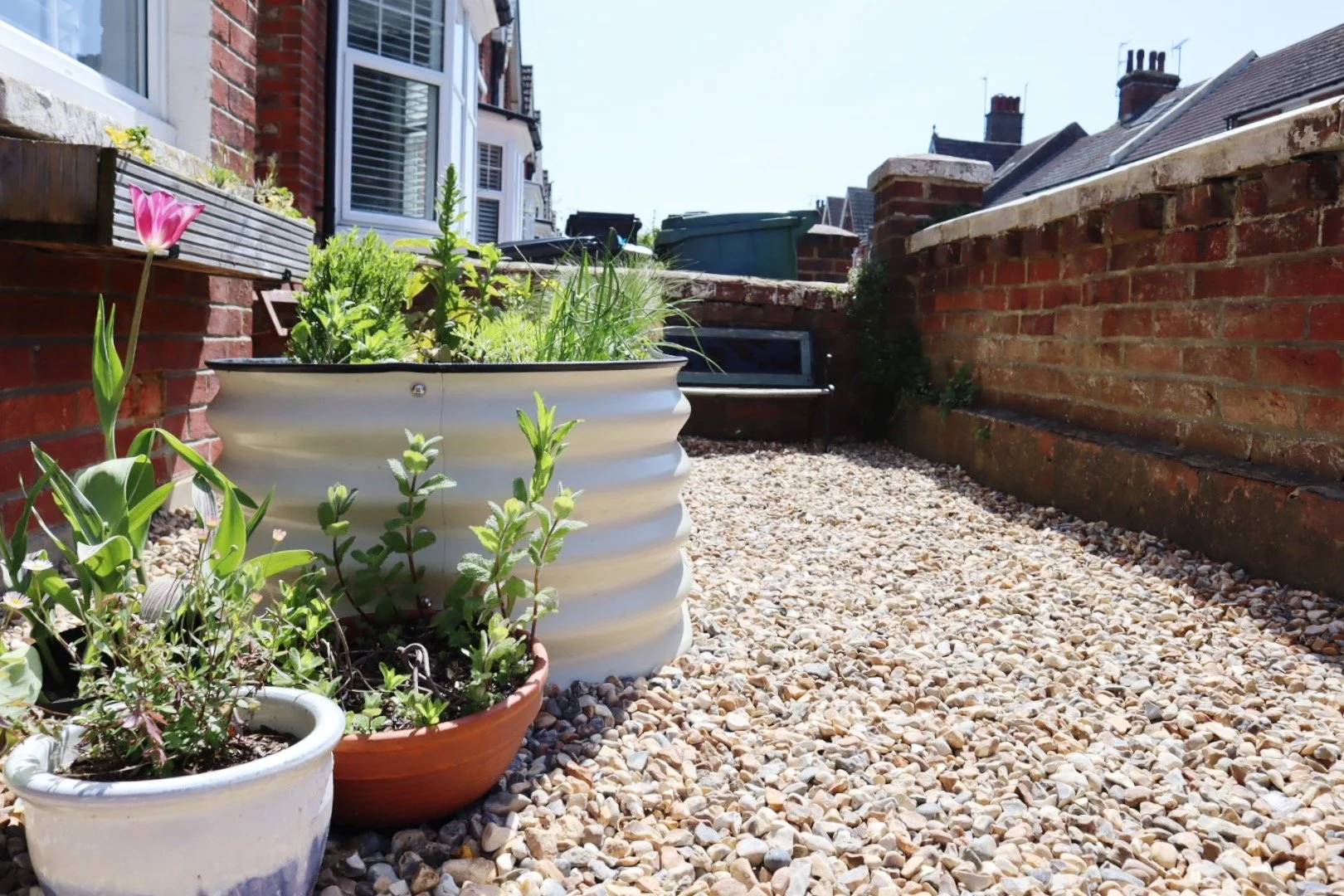Does it matter what type of soil you have with No-Dig gardening
I find when thinking about gardening there is soooo much advice out there. So many things to learn, so many different variations on where to plant, what type of soil you might have and how to create the perfect conditions for everything. And yet once I discovered no dig gardening I realised none of that matters. All that matters is feeding the soil, no matter what type of soil.
Hey, maybe I was so drawn to this style of gardening because there was no fuss or extras to it. I didn’t need to read an encyclopedia to understand how to grow a tomato and I didn’t need to buy any extra fertilizers or soil testing kits (right up my zero waste, minimalist street). But it wasn’t just all this. It was the fact that it makes so much sense and there’s so much scientific fact to back it up. Therefore, it’s no dig, no fuss all the way for me.
What is the best type of soil for no-dig gardening?
The simple answer is it does not matter what type of soil you have for no-gardening. The same mulching and little disturbance principles apply to any soil type.
Even with commonly known as hard types of soil to grow in like clay soil, this no problem at all when growing no-dig. You are adding organic matter to improve the soil structure and life in the soil. This is what will keep your plants healthy and not what the soil is like when you start.
Do I need to test the soil when starting a NO-DIG garden?
It is not neccessary to test the soil when starting a no-dig garden. The focus in on bring organic matter into the garden and not distrubing the soil in order to create bio-diversity within the soil.
Have a read of “Is No-Dig Worth It” to see why this is important.
Should I use different mulches for different types of soil?
Essentially you can use the same mulch for any type of soil, and it will depend on what you can get your hands on easily or for free. There are four different types of soi, all of which will benefit from no-dig methods of gardening.
1. Sandy soil.
Sandy soil is gritty and doesn’t hold water well. It drains quickly and has low nutrient retention. No dig will benefit sandy soil because mulching on-top of the soil will allow it to retain moisture and help to stop it drying out quickly. The soil structure will also improve making it more nutrient rich.
2. Silt Soil.
Silt soil is more fertile than sandy soil but is said to be prone to compaction. However, using no-dig methods prevent this so-called compaction because it creates healthy soil structure. The soil can be walked on without the worry of compacting it.
3. Clay Soil.
No-dig methods work extremely well with clay soil. This is because while clay soil holds water and can be prone to becoming waterlogged, no-dig gardening allows the soil to naturally aerate through healthy life in the soil, improving the drainage of the soil.
4. Loam Soil.
Loam soil is considered the best soil for gardening because it is a balanced mixture of sand, salt, and clay. It retains moisture and drains well at the same time. Essentially by adding organic matter to your soil year on year without digging it into the soil, all soil can develop to be like loam soil.
Do you need to adapt no-dig methods for different types of soil?
You do not need to adapt the methods of no-dig for different types of soil. Simply adding a layer of compost or your chosen type of mulch to your soil each year will multiply the micro-organisms and bio-diversity in the soil, creating a healthy soil structure and nutrient-rich soil.
You may want to apply a thicker layer of compost in the first few years of no-dig to kick-start this process or to suppress weeds.
Does no-dig gardening help clay soil?
Many people worry when they realize they have clay soil but actually, it is very nutrient-rich. Applying no-dig methods to clay soil will help to aerate it and enable good drainage, so the worry that clay soil becomes waterlogged is gone.
Will raised beds help me control the type of soil I have.
You can easily control the type of soil you have when installing raised beds. However, in most cases, this is not necessary. Nearly all “poor soil” can be enriched by practicing no-dig.
If for example you lived not far from me on the south downs where your garden was mainly chalk, or if you lived right on the beach with pebbles in your garden, raised bed would be an ideal solution for you. Or like me you had a concrete area you want to bring life to raised beds are perfect (see how I transformed my concrete front garden here).
Raised beds control the soil type because you build them up and are in control of what soil goes into them. Building them up using the lasagne method will allow you to create good drainage and healthy soil within them. But the same can be done naturally by adding nutrient-rich mulches like compost, woodchip, leaf mulch, or straw directly to the ground. This is why I believe them to be unnecessary for improving the soil and there mainly for aesthetic reasons. Unless you want raised bed because you like the look of them they are not necessary for improving the soil.
Tailoring plant selection for different soils in NO-DIG gardening.
In no-dig gardening, I worry less about what type of plants like a certain type of soil and more about the position of the plant and where it will be happy. For example, I have a large honey suckle growing at the top of my herb bed. It sucks a lot of moisture from this bed as well as this area receiving lots of sun. I therefore I plant Mediterranean herbs here like lavender, rosemary, and oregano in this area which are all quite drought-tolerant and like a lot of direct sunlight. In comparison in shady areas of the garden, I grow ferns and wild strawberries that would thrive naturally in a wooded and shady environment.
Many people worry about different types of soil making an area dry or more waterlogged but with no-dig gardening the soil will become more balanced and healthier, allowing all plants to thrive. Therefore, you do not need to worry about the type of soil you have effective what you can and cannot plant.
I hope with this article I have demonstrated that we should worry less about what we have in our gardens to start with and focus only on increasing the health of our soil by simply mulching and not disturbing the soil. This will allow our plants to thrive and you to be a happy and more relaxed gardener.
More articles for you to dive into…
How to Deal with Horsetail in an Organic, No-dig Way
Starting a Zero Waste, Eco-friendly Allotment.
Cheap and Sustainable Gardening Landscaping.
How to Source Budget and Organic Plants.



















Growing garlic organically on a no dig allotment. The best and easiest way to grow garlic.